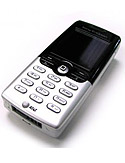The Most Confusing Health Mysteries of the Year

Will my cell phone give me cancer?
"The jury is still out," says Linda M. Liau, MD, PhD, a UCLA neurosurgeon whose brain tumor patients often ask if cellular use is to blame. "None of the U.S. studies showed any significant correlation." But researchers from Sweden's Karolinska Institute reported in the November 2004 issue of Epidemiology that ten or more years of analog cell phone use raised the risk of developing acoustic neuroma, a benign nerve tumor. Because most of today's phones are digital, it's impossible to know whether they pose a similar risk. In January the head of Britain's National Radiological Protection Board, acting with an abundance of caution, recommended that children under 8 not use cell phones and that those between 9 and 14 use them only when it's essential. Given that cell phones have been the rage in this country only since the late 1990s, "we may see something harmful 20 years down the road," says Liau, who uses one herself but keeps the conversations short.
Which calcium sources are best absorbed by the body?
The calcium in milk, yogurt and cheese is the most readily absorbed, says Marilyn Tanner, a registered dietitian at Washington University School of Medicine in St. Louis. Although leafy greens are also a good source of calcium, some of them (including spinach and chard) contain substances called oxalates that bind to calcium and keep it from being absorbed. So stick with dairy, canned sardines and salmon, calcium-fortified orange juice, low-oxalate greens like kale and broccoli, and calcium carbonate in antacid pills. Because calcium carbonate requires stomach acid for absorption, anyone taking acid-reducing drugs like Nexium should choose calcium citrate instead.



